History of International Relations Lecture 7: The Cold

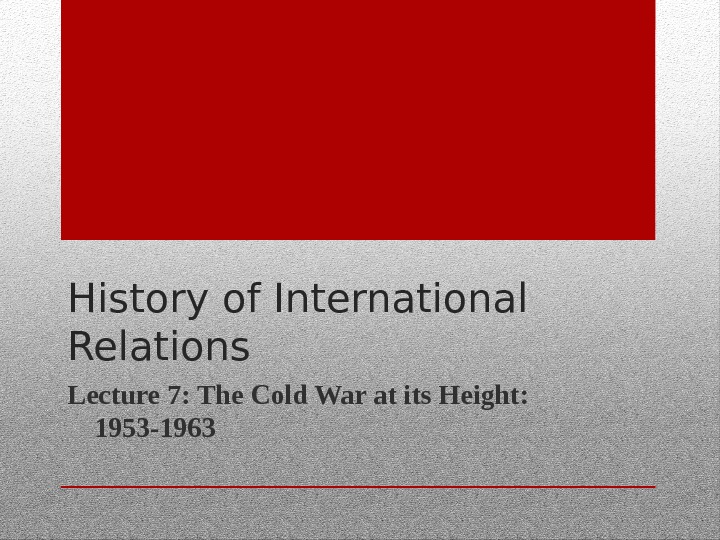
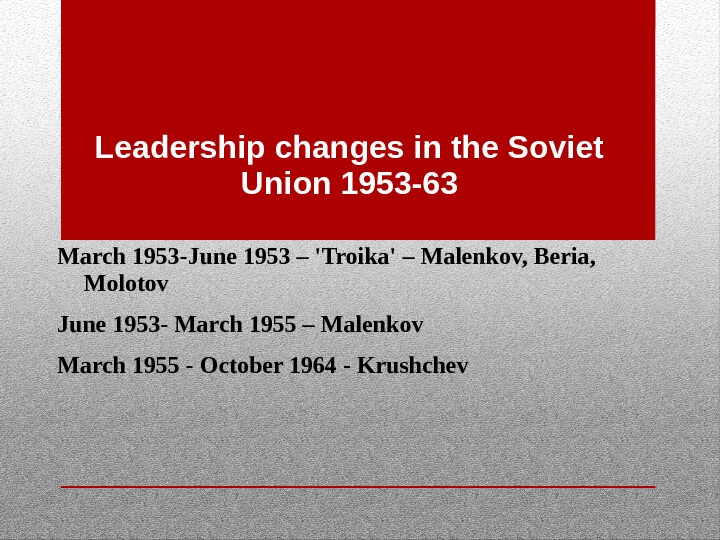
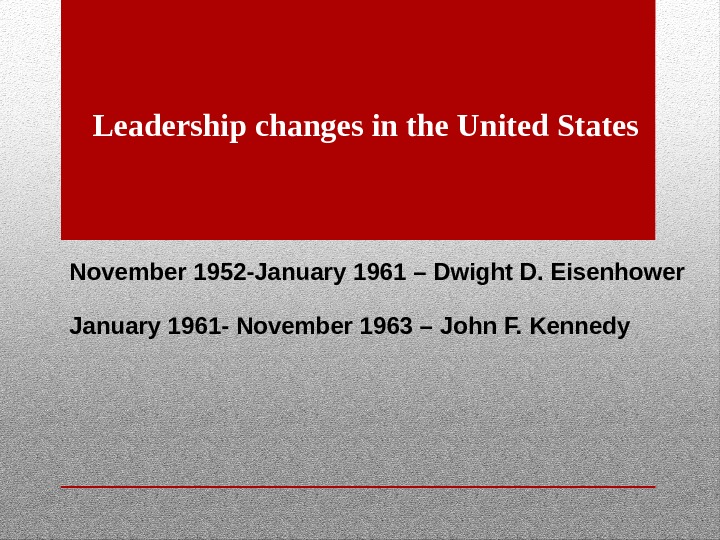
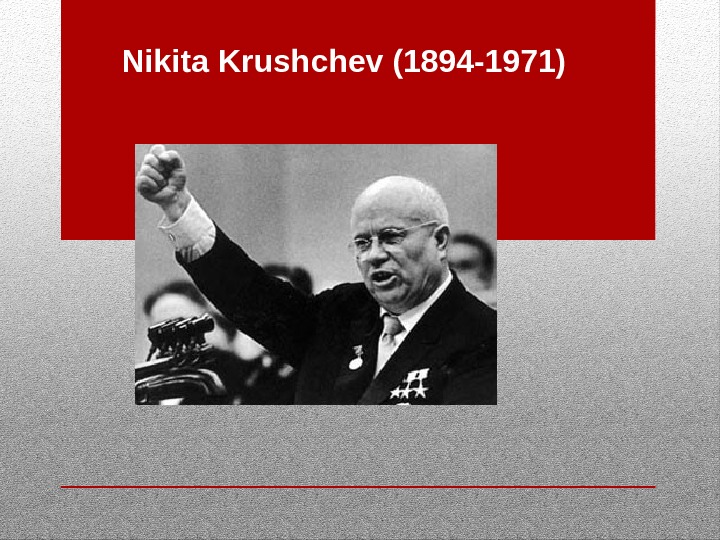
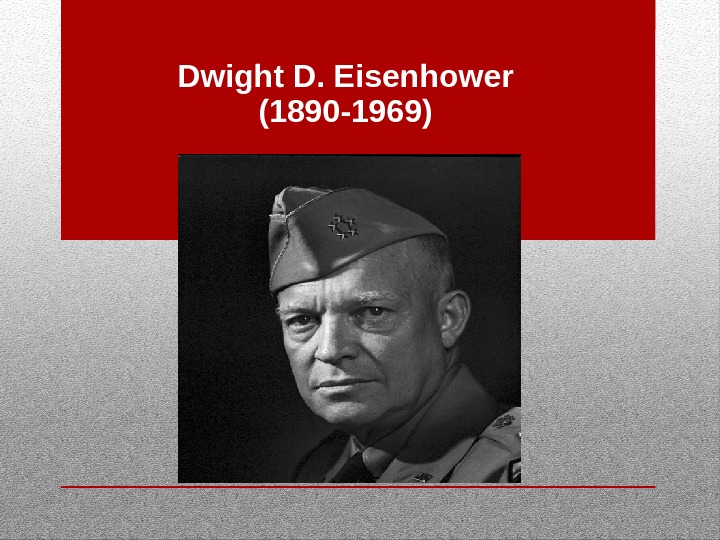
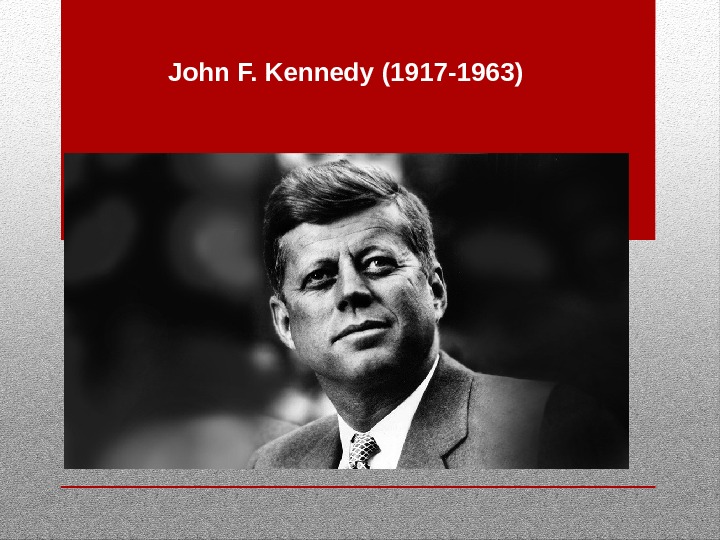
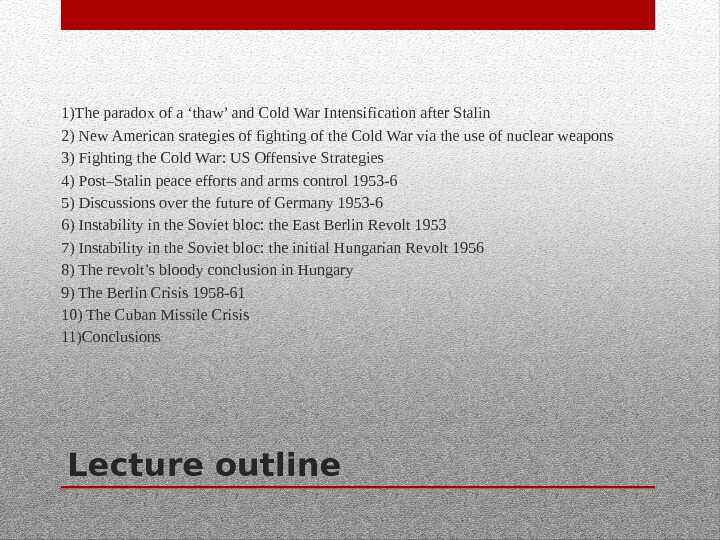
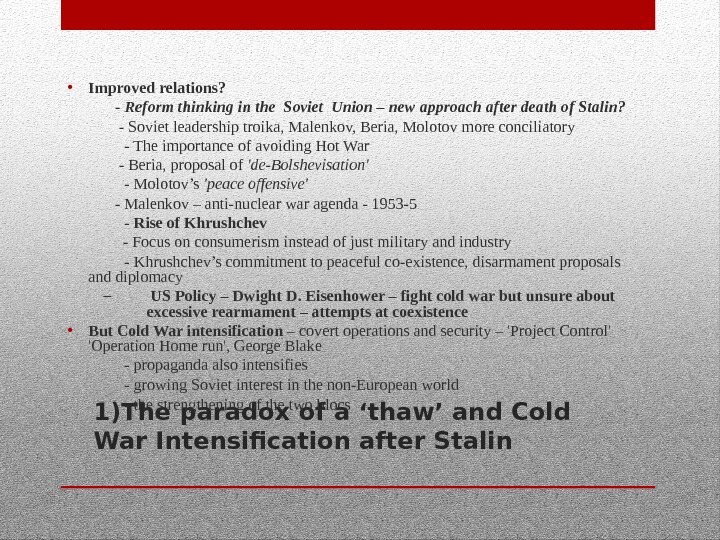
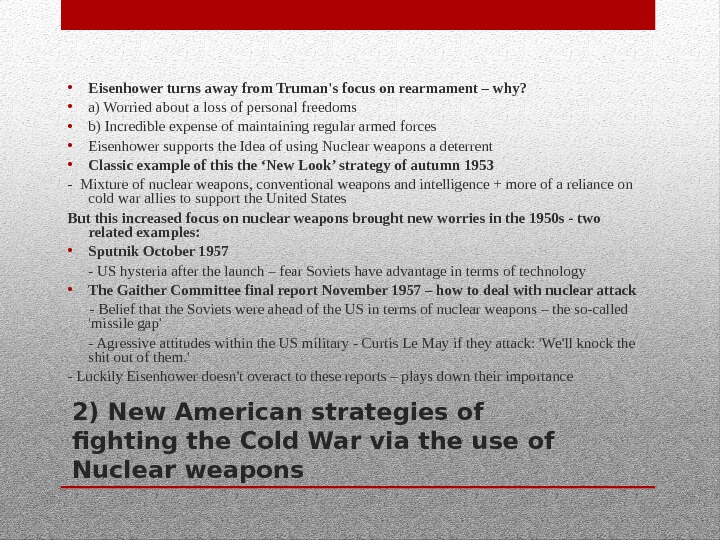
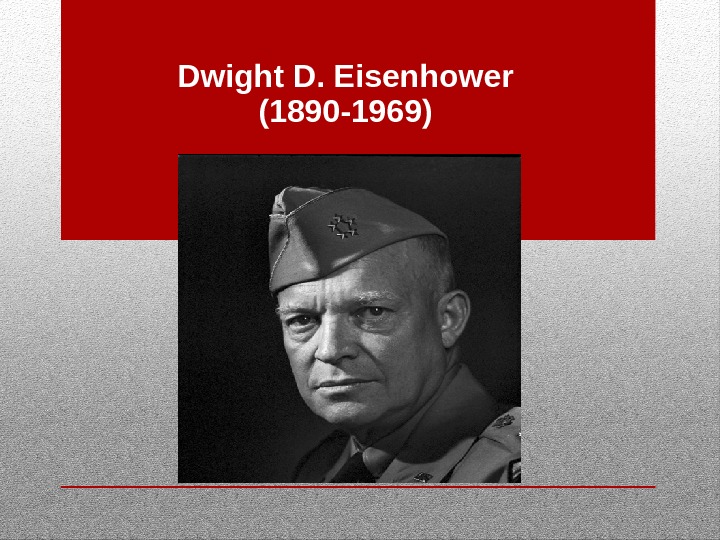
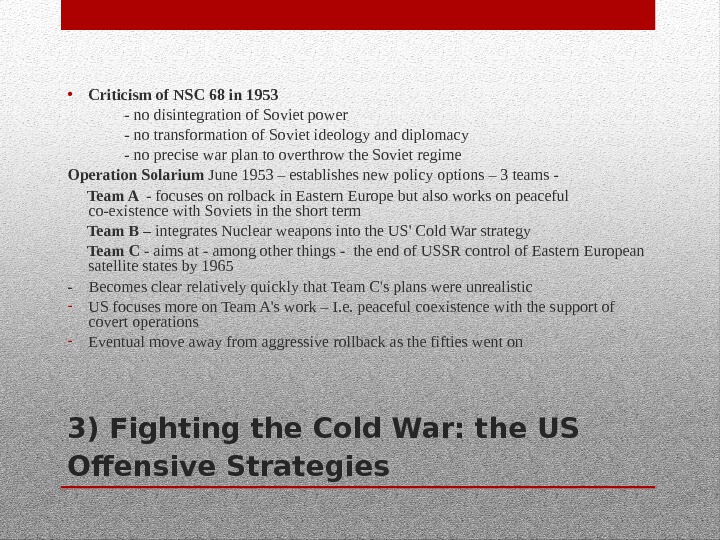
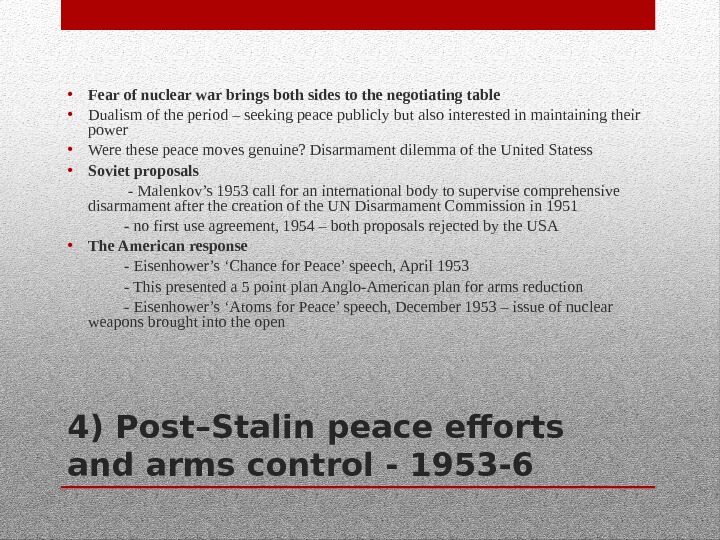
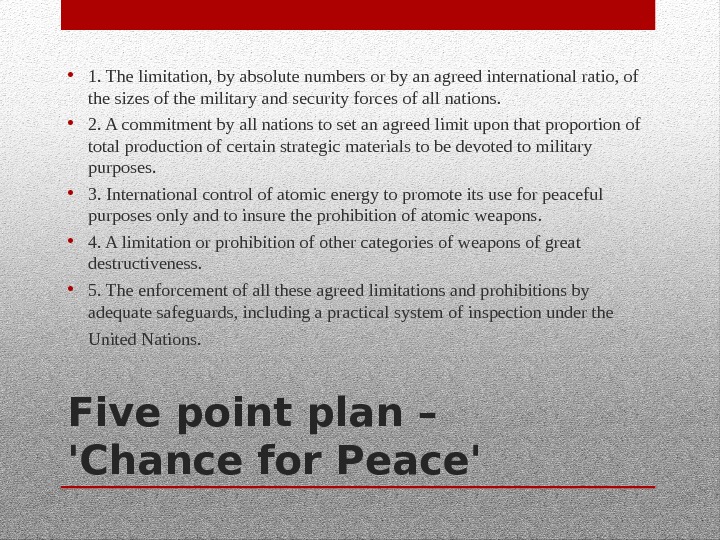
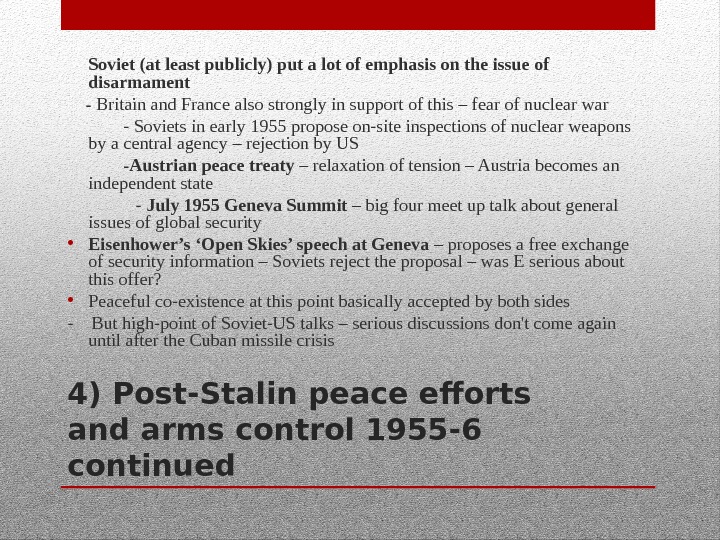
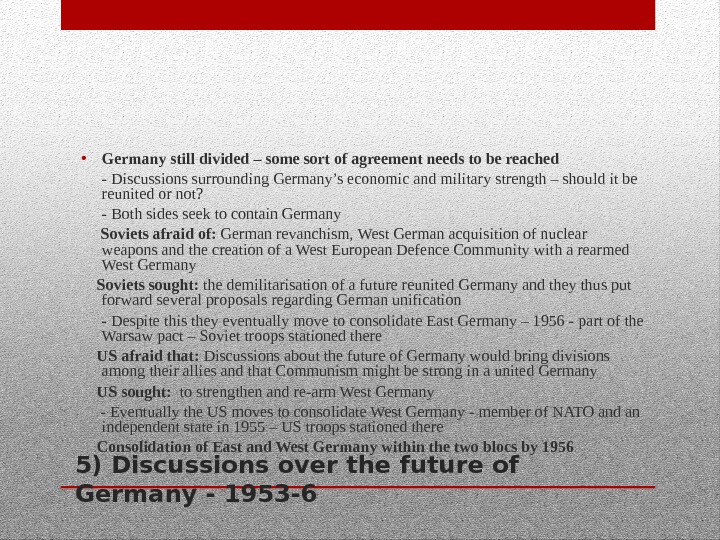
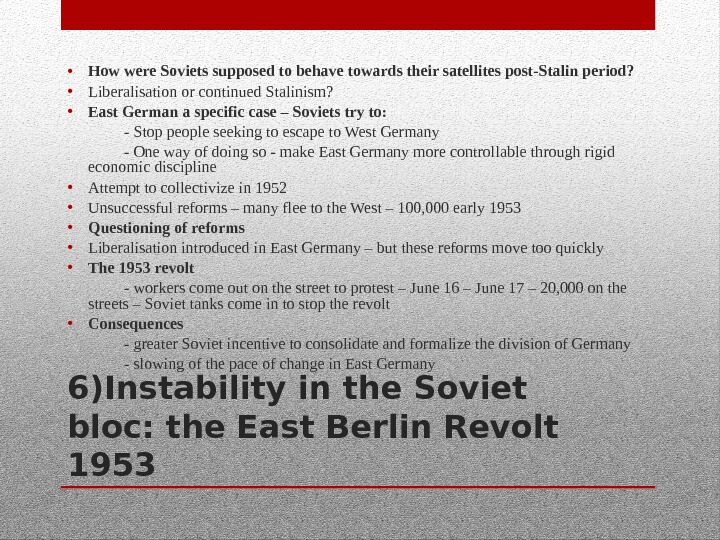
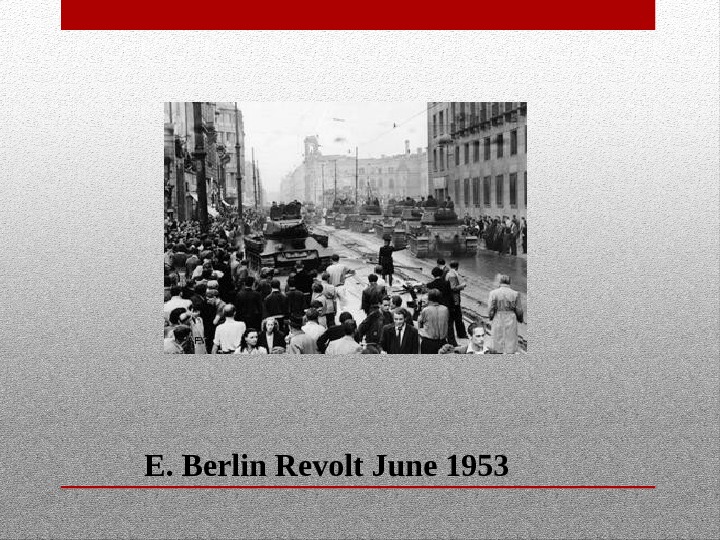
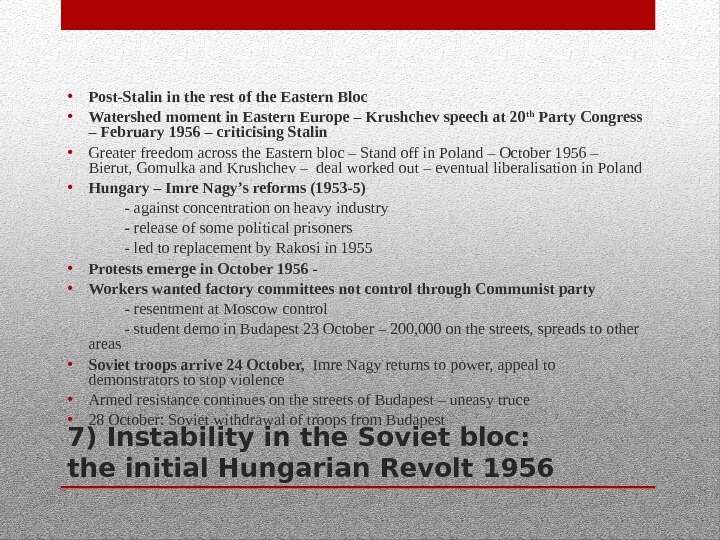
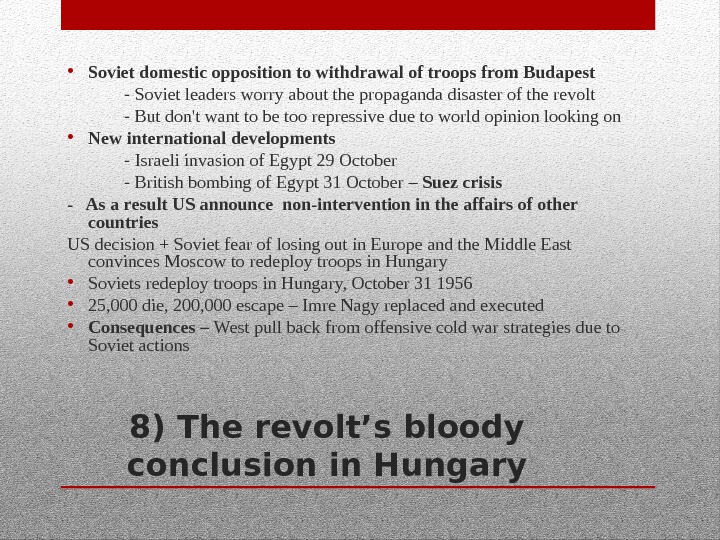
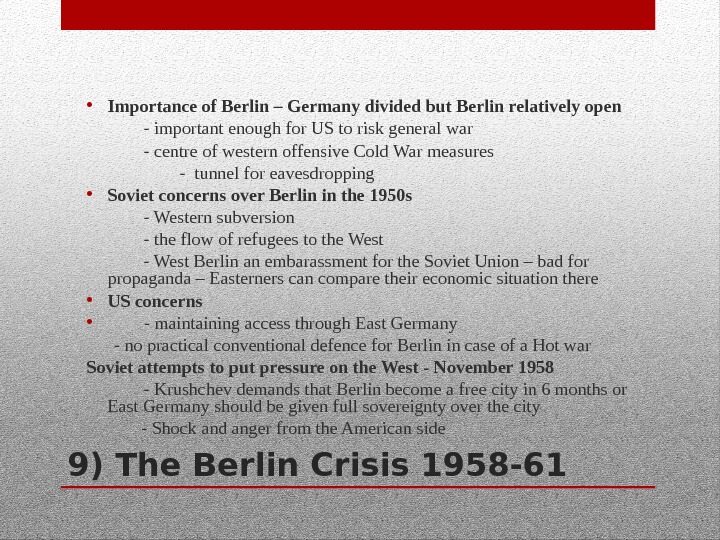
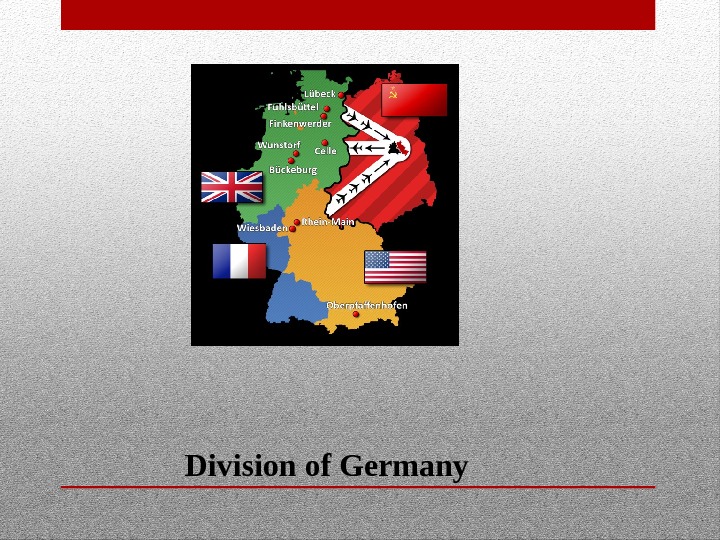
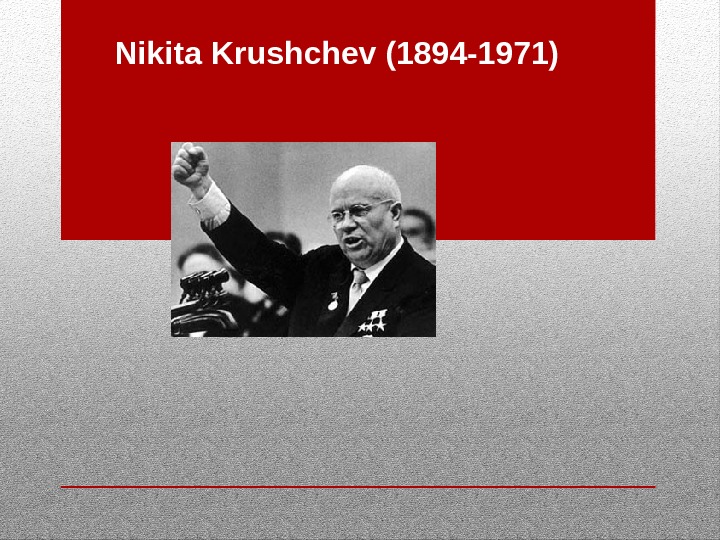
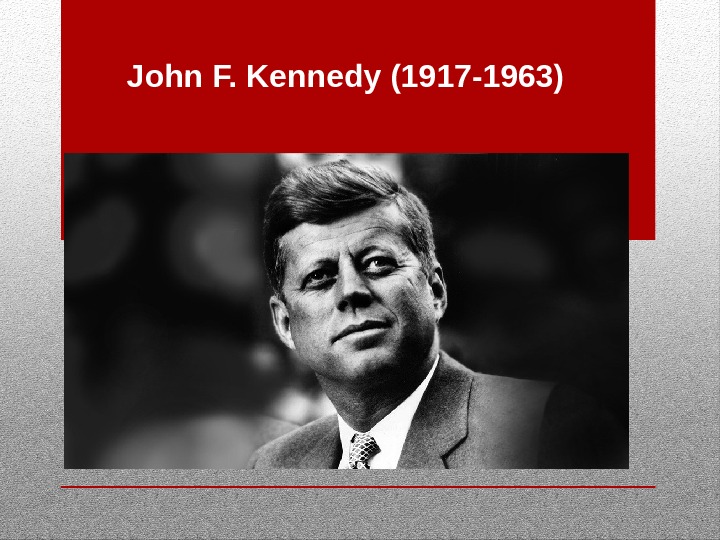
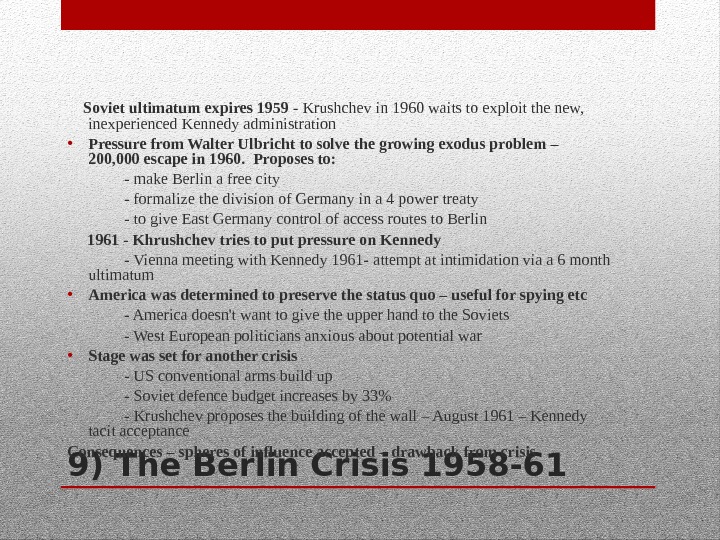
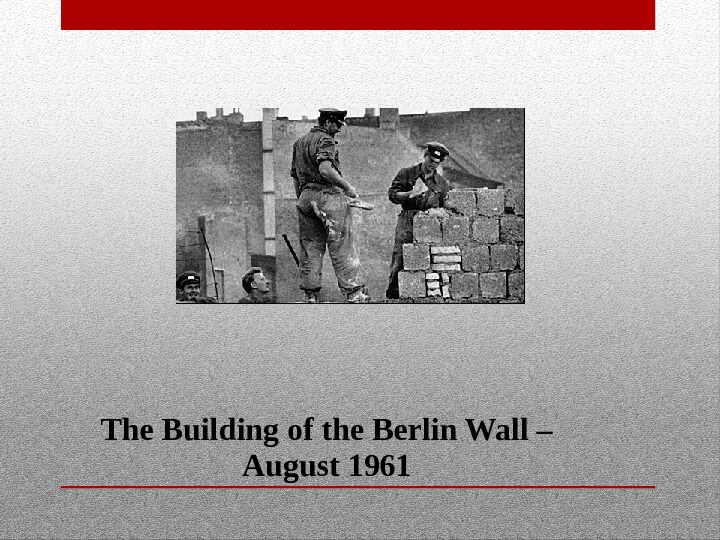
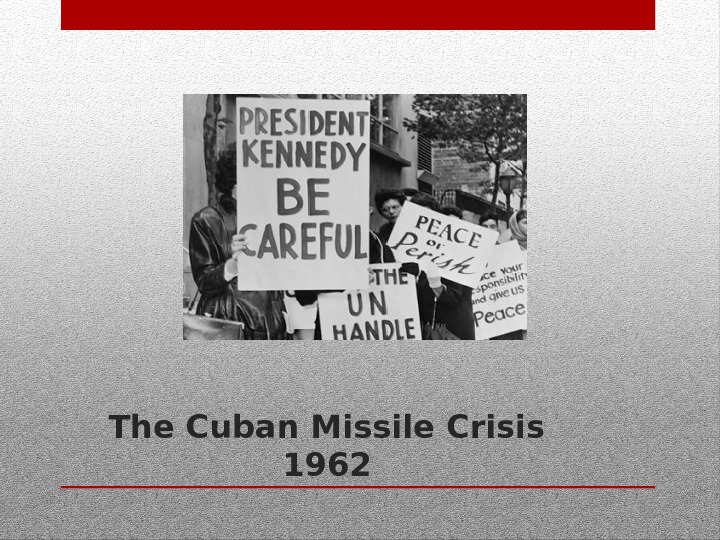
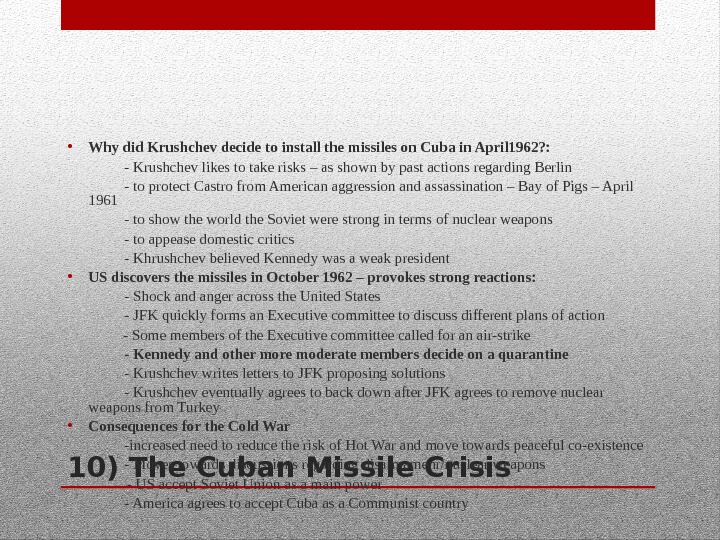
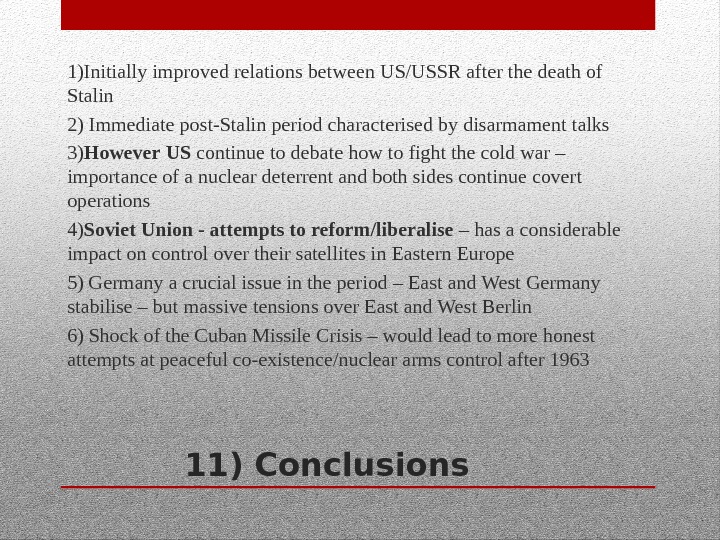
lecture_seven_-_1953-63_ul.ppt
- Размер: 3 Mегабайта
- Количество слайдов: 28
Описание презентации History of International Relations Lecture 7: The Cold по слайдам
 History of International Relations Lecture 7: The Cold War at its Height: 1953 —
History of International Relations Lecture 7: The Cold War at its Height: 1953 —
 March 1953 -June 1953 – ‘Troika’ – Malenkov, Beria, Molotov June 1953 — March 1955 – Malenkov March 1955 — October 1964 — Krushchev Leadership changes in the Soviet Union 1953 —
March 1953 -June 1953 – ‘Troika’ – Malenkov, Beria, Molotov June 1953 — March 1955 – Malenkov March 1955 — October 1964 — Krushchev Leadership changes in the Soviet Union 1953 —
 Leadership changes in the United States November 1952 -January 1961 – Dwight D. Eisenhower January 1961 — November 1963 – John F. Kennedy
Leadership changes in the United States November 1952 -January 1961 – Dwight D. Eisenhower January 1961 — November 1963 – John F. Kennedy
 Nikita Krushchev (1894 -1971)
Nikita Krushchev (1894 -1971)
 Dwight D. Eisenhower (1890 -1969)
Dwight D. Eisenhower (1890 -1969)
 John F. Kennedy (1917 -1963)
John F. Kennedy (1917 -1963)
 Lecture outline 1)The paradox of a ‘thaw’ and Cold War Intensification after Stalin 2) New American srategies of fighting of the Cold War via the use of nuclear weapons 3) Fighting the Cold War: US Offensive Strategies 4) Post–Stalin peace efforts and arms control 1953 -6 5) Discussions over the future of Germany 1953 -6 6) Instability in the Soviet bloc: the East Berlin Revolt 1953 7) Instability in the Soviet bloc: the initial Hungarian Revolt 1956 8) The revolt’s bloody conclusion in Hungary 9) The Berlin Crisis 1958 -61 10) The Cuban Missile Crisis 11)Conclusions
Lecture outline 1)The paradox of a ‘thaw’ and Cold War Intensification after Stalin 2) New American srategies of fighting of the Cold War via the use of nuclear weapons 3) Fighting the Cold War: US Offensive Strategies 4) Post–Stalin peace efforts and arms control 1953 -6 5) Discussions over the future of Germany 1953 -6 6) Instability in the Soviet bloc: the East Berlin Revolt 1953 7) Instability in the Soviet bloc: the initial Hungarian Revolt 1956 8) The revolt’s bloody conclusion in Hungary 9) The Berlin Crisis 1958 -61 10) The Cuban Missile Crisis 11)Conclusions
 1)The paradox of a ‘thaw’ and Cold War Intensification after Stalin • Improved relations? — Reform thinking in the Soviet Union – new approach after death of Stalin? — Soviet leadership troika, Malenkov, Beria, Molotov more conciliatory — The importance of avoiding Hot War — Beria, proposal of ‘de-Bolshevisation’ — Molotov’s ‘peace offensive’ — Malenkov – anti-nuclear war agenda — 1953 -5 — Rise of Khrushchev — Focus on consumerism instead of just military and industry — Khrushchev’s commitment to peaceful co-existence, disarmament proposals and diplomacy – US Policy – Dwight D. Eisenhower – fight cold war but unsure about excessive rearmament – attempts at coexistence • But Cold War intensification – covert operations and security – ‘Project Control’ ‘Operation Home run’, George Blake — propaganda also intensifies — growing Soviet interest in the non-European world — the strengthening of the two blocs
1)The paradox of a ‘thaw’ and Cold War Intensification after Stalin • Improved relations? — Reform thinking in the Soviet Union – new approach after death of Stalin? — Soviet leadership troika, Malenkov, Beria, Molotov more conciliatory — The importance of avoiding Hot War — Beria, proposal of ‘de-Bolshevisation’ — Molotov’s ‘peace offensive’ — Malenkov – anti-nuclear war agenda — 1953 -5 — Rise of Khrushchev — Focus on consumerism instead of just military and industry — Khrushchev’s commitment to peaceful co-existence, disarmament proposals and diplomacy – US Policy – Dwight D. Eisenhower – fight cold war but unsure about excessive rearmament – attempts at coexistence • But Cold War intensification – covert operations and security – ‘Project Control’ ‘Operation Home run’, George Blake — propaganda also intensifies — growing Soviet interest in the non-European world — the strengthening of the two blocs
 2) New American strategies of fighting the Cold War via the use of Nuclear weapons • Eisenhower turns away from Truman’s focus on rearmament – why? • a) Worried about a loss of personal freedoms • b) Incredible expense of maintaining regular armed forces • Eisenhower supports the Idea of using Nuclear weapons a deterrent • Classic example of this the ‘New Look’ strategy of autumn 1953 — Mixture of nuclear weapons, conventional weapons and intelligence + more of a reliance on cold war allies to support the United States But this increased focus on nuclear weapons brought new worries in the 1950 s — two related examples: • Sputnik October 1957 — US hysteria after the launch – fear Soviets have advantage in terms of technology • The Gaither Committee final report November 1957 – how to deal with nuclear attack — Belief that the Soviets were ahead of the US in terms of nuclear weapons – the so-called ‘missile gap’ — Agressive attitudes within the US military — Curtis Le May if they attack: ‘We’ll knock the shit out of them. ‘ — Luckily Eisenhower doesn’t overact to these reports – plays down their importance
2) New American strategies of fighting the Cold War via the use of Nuclear weapons • Eisenhower turns away from Truman’s focus on rearmament – why? • a) Worried about a loss of personal freedoms • b) Incredible expense of maintaining regular armed forces • Eisenhower supports the Idea of using Nuclear weapons a deterrent • Classic example of this the ‘New Look’ strategy of autumn 1953 — Mixture of nuclear weapons, conventional weapons and intelligence + more of a reliance on cold war allies to support the United States But this increased focus on nuclear weapons brought new worries in the 1950 s — two related examples: • Sputnik October 1957 — US hysteria after the launch – fear Soviets have advantage in terms of technology • The Gaither Committee final report November 1957 – how to deal with nuclear attack — Belief that the Soviets were ahead of the US in terms of nuclear weapons – the so-called ‘missile gap’ — Agressive attitudes within the US military — Curtis Le May if they attack: ‘We’ll knock the shit out of them. ‘ — Luckily Eisenhower doesn’t overact to these reports – plays down their importance
 Dwight D. Eisenhower (1890 -1969)
Dwight D. Eisenhower (1890 -1969)
 3) Fighting the Cold War: the US Offensive Strategies • Criticism of NSC 68 in 1953 — no disintegration of Soviet power — no transformation of Soviet ideology and diplomacy — no precise war plan to overthrow the Soviet regime Operation Solarium June 1953 – establishes new policy options – 3 teams — Team A — focuses on rolback in Eastern Europe but also works on peaceful co-existence with Soviets in the short term Team B – integrates Nuclear weapons into the US’ Cold War strategy Team C — aims at — among other things — the end of USSR control of Eastern European satellite states by 1965 — Becomes clear relatively quickly that Team C’s plans were unrealistic — US focuses more on Team A’s work – I. e. peaceful coexistence with the support of covert operations — Eventual move away from aggressive rollback as the fifties went on
3) Fighting the Cold War: the US Offensive Strategies • Criticism of NSC 68 in 1953 — no disintegration of Soviet power — no transformation of Soviet ideology and diplomacy — no precise war plan to overthrow the Soviet regime Operation Solarium June 1953 – establishes new policy options – 3 teams — Team A — focuses on rolback in Eastern Europe but also works on peaceful co-existence with Soviets in the short term Team B – integrates Nuclear weapons into the US’ Cold War strategy Team C — aims at — among other things — the end of USSR control of Eastern European satellite states by 1965 — Becomes clear relatively quickly that Team C’s plans were unrealistic — US focuses more on Team A’s work – I. e. peaceful coexistence with the support of covert operations — Eventual move away from aggressive rollback as the fifties went on
 4) Post–Stalin peace efforts and arms control — 1953 -6 • Fear of nuclear war brings both sides to the negotiating table • Dualism of the period – seeking peace publicly but also interested in maintaining their power • Were these peace moves genuine? Disarmament dilemma of the United Statess • Soviet proposals — Malenkov’s 1953 call for an international body to supervise comprehensive disarmament after the creation of the UN Disarmament Commission in 1951 — no first use agreement, 1954 – both proposals rejected by the USA • The American response — Eisenhower’s ‘Chance for Peace’ speech, April 1953 — This presented a 5 point plan Anglo-American plan for arms reduction — Eisenhower’s ‘Atoms for Peace’ speech, December 1953 – issue of nuclear weapons brought into the open
4) Post–Stalin peace efforts and arms control — 1953 -6 • Fear of nuclear war brings both sides to the negotiating table • Dualism of the period – seeking peace publicly but also interested in maintaining their power • Were these peace moves genuine? Disarmament dilemma of the United Statess • Soviet proposals — Malenkov’s 1953 call for an international body to supervise comprehensive disarmament after the creation of the UN Disarmament Commission in 1951 — no first use agreement, 1954 – both proposals rejected by the USA • The American response — Eisenhower’s ‘Chance for Peace’ speech, April 1953 — This presented a 5 point plan Anglo-American plan for arms reduction — Eisenhower’s ‘Atoms for Peace’ speech, December 1953 – issue of nuclear weapons brought into the open
 Five point plan – ‘Chance for Peace’ • 1. The limitation, by absolute numbers or by an agreed international ratio, of the sizes of the military and security forces of all nations. • 2. A commitment by all nations to set an agreed limit upon that proportion of total production of certain strategic materials to be devoted to military purposes. • 3. International control of atomic energy to promote its use for peaceful purposes only and to insure the prohibition of atomic weapons. • 4. A limitation or prohibition of other categories of weapons of great destructiveness. • 5. The enforcement of all these agreed limitations and prohibitions by adequate safeguards, including a practical system of inspection under the United Nations.
Five point plan – ‘Chance for Peace’ • 1. The limitation, by absolute numbers or by an agreed international ratio, of the sizes of the military and security forces of all nations. • 2. A commitment by all nations to set an agreed limit upon that proportion of total production of certain strategic materials to be devoted to military purposes. • 3. International control of atomic energy to promote its use for peaceful purposes only and to insure the prohibition of atomic weapons. • 4. A limitation or prohibition of other categories of weapons of great destructiveness. • 5. The enforcement of all these agreed limitations and prohibitions by adequate safeguards, including a practical system of inspection under the United Nations.
 4) Post-Stalin peace efforts and arms control 1955 -6 continued Soviet (at least publicly) put a lot of emphasis on the issue of disarmament — Britain and France also strongly in support of this – fear of nuclear war — Soviets in early 1955 propose on-site inspections of nuclear weapons by a central agency – rejection by US -Austrian peace treaty – relaxation of tension – Austria becomes an independent state — July 1955 Geneva Summit – big four meet up talk about general issues of global security • Eisenhower’s ‘Open Skies’ speech at Geneva – proposes a free exchange of security information – Soviets reject the proposal – was E serious about this offer? • Peaceful co-existence at this point basically accepted by both sides — But high-point of Soviet-US talks – serious discussions don’t come again until after the Cuban missile crisis
4) Post-Stalin peace efforts and arms control 1955 -6 continued Soviet (at least publicly) put a lot of emphasis on the issue of disarmament — Britain and France also strongly in support of this – fear of nuclear war — Soviets in early 1955 propose on-site inspections of nuclear weapons by a central agency – rejection by US -Austrian peace treaty – relaxation of tension – Austria becomes an independent state — July 1955 Geneva Summit – big four meet up talk about general issues of global security • Eisenhower’s ‘Open Skies’ speech at Geneva – proposes a free exchange of security information – Soviets reject the proposal – was E serious about this offer? • Peaceful co-existence at this point basically accepted by both sides — But high-point of Soviet-US talks – serious discussions don’t come again until after the Cuban missile crisis
 5) Discussions over the future of Germany — 1953 -6 • Germany still divided – some sort of agreement needs to be reached — Discussions surrounding Germany’s economic and military strength – should it be reunited or not? — Both sides seek to contain Germany Soviets afraid of: German revanchism, West German acquisition of nuclear weapons and the creation of a West European Defence Community with a rearmed West Germany Soviets sought: the demilitarisation of a future reunited Germany and they thus put forward several proposals regarding German unification — Despite this they eventually move to consolidate East Germany – 1956 — part of the Warsaw pact – Soviet troops stationed there US afraid that: Discussions about the future of Germany would bring divisions among their allies and that Communism might be strong in a united Germany US sought: to strengthen and re-arm West Germany — Eventually the US moves to consolidate West Germany — member of NATO and an independent state in 1955 – US troops stationed there Consolidation of East and West Germany within the two blocs by
5) Discussions over the future of Germany — 1953 -6 • Germany still divided – some sort of agreement needs to be reached — Discussions surrounding Germany’s economic and military strength – should it be reunited or not? — Both sides seek to contain Germany Soviets afraid of: German revanchism, West German acquisition of nuclear weapons and the creation of a West European Defence Community with a rearmed West Germany Soviets sought: the demilitarisation of a future reunited Germany and they thus put forward several proposals regarding German unification — Despite this they eventually move to consolidate East Germany – 1956 — part of the Warsaw pact – Soviet troops stationed there US afraid that: Discussions about the future of Germany would bring divisions among their allies and that Communism might be strong in a united Germany US sought: to strengthen and re-arm West Germany — Eventually the US moves to consolidate West Germany — member of NATO and an independent state in 1955 – US troops stationed there Consolidation of East and West Germany within the two blocs by
 6)Instability in the Soviet bloc: the East Berlin Revolt 1953 • How were Soviets supposed to behave towards their satellites post-Stalin period? • Liberalisation or continued Stalinism? • East German a specific case – Soviets try to: — Stop people seeking to escape to West Germany — One way of doing so — make East Germany more controllable through rigid economic discipline • Attempt to collectivize in 1952 • Unsuccessful reforms – many flee to the West – 100, 000 early 1953 • Questioning of reforms • Liberalisation introduced in East Germany – but these reforms move too quickly • The 1953 revolt — workers come out on the street to protest – June 16 – June 17 – 20, 000 on the streets – Soviet tanks come in to stop the revolt • Consequences — greater Soviet incentive to consolidate and formalize the division of Germany — slowing of the pace of change in East Germany
6)Instability in the Soviet bloc: the East Berlin Revolt 1953 • How were Soviets supposed to behave towards their satellites post-Stalin period? • Liberalisation or continued Stalinism? • East German a specific case – Soviets try to: — Stop people seeking to escape to West Germany — One way of doing so — make East Germany more controllable through rigid economic discipline • Attempt to collectivize in 1952 • Unsuccessful reforms – many flee to the West – 100, 000 early 1953 • Questioning of reforms • Liberalisation introduced in East Germany – but these reforms move too quickly • The 1953 revolt — workers come out on the street to protest – June 16 – June 17 – 20, 000 on the streets – Soviet tanks come in to stop the revolt • Consequences — greater Soviet incentive to consolidate and formalize the division of Germany — slowing of the pace of change in East Germany
 E. Berlin Revolt June
E. Berlin Revolt June
 7) Instability in the Soviet bloc: the initial Hungarian Revolt 1956 • Post-Stalin in the rest of the Eastern Bloc • Watershed moment in Eastern Europe – Krushchev speech at 20 th Party Congress – February 1956 – criticising Stalin • Greater freedom across the Eastern bloc – Stand off in Poland – October 1956 – Bierut, Gomulka and Krushchev – deal worked out – eventual liberalisation in Poland • Hungary – Imre Nagy’s reforms (1953 -5) — against concentration on heavy industry — release of some political prisoners — led to replacement by Rakosi in 1955 • Protests emerge in October 1956 — • Workers wanted factory committees not control through Communist party — resentment at Moscow control — student demo in Budapest 23 October – 200, 000 on the streets, spreads to other areas • Soviet troops arrive 24 October, Imre Nagy returns to power, appeal to demonstrators to stop violence • Armed resistance continues on the streets of Budapest – uneasy truce • 28 October: Soviet withdrawal of troops from Budapest
7) Instability in the Soviet bloc: the initial Hungarian Revolt 1956 • Post-Stalin in the rest of the Eastern Bloc • Watershed moment in Eastern Europe – Krushchev speech at 20 th Party Congress – February 1956 – criticising Stalin • Greater freedom across the Eastern bloc – Stand off in Poland – October 1956 – Bierut, Gomulka and Krushchev – deal worked out – eventual liberalisation in Poland • Hungary – Imre Nagy’s reforms (1953 -5) — against concentration on heavy industry — release of some political prisoners — led to replacement by Rakosi in 1955 • Protests emerge in October 1956 — • Workers wanted factory committees not control through Communist party — resentment at Moscow control — student demo in Budapest 23 October – 200, 000 on the streets, spreads to other areas • Soviet troops arrive 24 October, Imre Nagy returns to power, appeal to demonstrators to stop violence • Armed resistance continues on the streets of Budapest – uneasy truce • 28 October: Soviet withdrawal of troops from Budapest
 8) The revolt’s bloody conclusion in Hungary • Soviet domestic opposition to withdrawal of troops from Budapest — Soviet leaders worry about the propaganda disaster of the revolt — But don’t want to be too repressive due to world opinion looking on • New international developments — Israeli invasion of Egypt 29 October — British bombing of Egypt 31 October – Suez crisis — As a result US announce non-intervention in the affairs of other countries US decision + Soviet fear of losing out in Europe and the Middle East convinces Moscow to redeploy troops in Hungary • Soviets redeploy troops in Hungary, October 31 1956 • 25, 000 die, 200, 000 escape – Imre Nagy replaced and executed • Consequences – West pull back from offensive cold war strategies due to Soviet actions
8) The revolt’s bloody conclusion in Hungary • Soviet domestic opposition to withdrawal of troops from Budapest — Soviet leaders worry about the propaganda disaster of the revolt — But don’t want to be too repressive due to world opinion looking on • New international developments — Israeli invasion of Egypt 29 October — British bombing of Egypt 31 October – Suez crisis — As a result US announce non-intervention in the affairs of other countries US decision + Soviet fear of losing out in Europe and the Middle East convinces Moscow to redeploy troops in Hungary • Soviets redeploy troops in Hungary, October 31 1956 • 25, 000 die, 200, 000 escape – Imre Nagy replaced and executed • Consequences – West pull back from offensive cold war strategies due to Soviet actions
 9) The Berlin Crisis 1958 -61 • Importance of Berlin – Germany divided but Berlin relatively open — important enough for US to risk general war — centre of western offensive Cold War measures — tunnel for eavesdropping • Soviet concerns over Berlin in the 1950 s — Western subversion — the flow of refugees to the West — West Berlin an embarassment for the Soviet Union – bad for propaganda – Easterners can compare their economic situation there • US concerns • — maintaining access through East Germany — no practical conventional defence for Berlin in case of a Hot war Soviet attempts to put pressure on the West — November 1958 — Krushchev demands that Berlin become a free city in 6 months or East Germany should be given full sovereignty over the city — Shock and anger from the American side
9) The Berlin Crisis 1958 -61 • Importance of Berlin – Germany divided but Berlin relatively open — important enough for US to risk general war — centre of western offensive Cold War measures — tunnel for eavesdropping • Soviet concerns over Berlin in the 1950 s — Western subversion — the flow of refugees to the West — West Berlin an embarassment for the Soviet Union – bad for propaganda – Easterners can compare their economic situation there • US concerns • — maintaining access through East Germany — no practical conventional defence for Berlin in case of a Hot war Soviet attempts to put pressure on the West — November 1958 — Krushchev demands that Berlin become a free city in 6 months or East Germany should be given full sovereignty over the city — Shock and anger from the American side
 Division of Germany
Division of Germany
 Nikita Krushchev (1894 -1971)
Nikita Krushchev (1894 -1971)
 John F. Kennedy (1917 -1963)
John F. Kennedy (1917 -1963)
 9) The Berlin Crisis 1958 -61 Soviet ultimatum expires 1959 — Krushchev in 1960 waits to exploit the new, inexperienced Kennedy administration • Pressure from Walter Ulbricht to solve the growing exodus problem – 200, 000 escape in 1960. Proposes to: — make Berlin a free city — formalize the division of Germany in a 4 power treaty — to give East Germany control of access routes to Berlin 1961 — Khrushchev tries to put pressure on Kennedy — Vienna meeting with Kennedy 1961 — attempt at intimidation via a 6 month ultimatum • America was determined to preserve the status quo – useful for spying etc — America doesn’t want to give the upper hand to the Soviets — West European politicians anxious about potential war • Stage was set for another crisis — US conventional arms build up — Soviet defence budget increases by 33% — Krushchev proposes the building of the wall – August 1961 – Kennedy tacit acceptance Consequences – spheres of influence accepted – drawback from crisis
9) The Berlin Crisis 1958 -61 Soviet ultimatum expires 1959 — Krushchev in 1960 waits to exploit the new, inexperienced Kennedy administration • Pressure from Walter Ulbricht to solve the growing exodus problem – 200, 000 escape in 1960. Proposes to: — make Berlin a free city — formalize the division of Germany in a 4 power treaty — to give East Germany control of access routes to Berlin 1961 — Khrushchev tries to put pressure on Kennedy — Vienna meeting with Kennedy 1961 — attempt at intimidation via a 6 month ultimatum • America was determined to preserve the status quo – useful for spying etc — America doesn’t want to give the upper hand to the Soviets — West European politicians anxious about potential war • Stage was set for another crisis — US conventional arms build up — Soviet defence budget increases by 33% — Krushchev proposes the building of the wall – August 1961 – Kennedy tacit acceptance Consequences – spheres of influence accepted – drawback from crisis
 The Building of the Berlin Wall – August
The Building of the Berlin Wall – August
 The Cuban Missile Crisis
The Cuban Missile Crisis
 10) The Cuban Missile Crisis • Why did Krushchev decide to install the missiles on Cuba in April 1962? : — Krushchev likes to take risks – as shown by past actions regarding Berlin — to protect Castro from American aggression and assassination – Bay of Pigs – April 1961 — to show the world the Soviet were strong in terms of nuclear weapons — to appease domestic critics — Khrushchev believed Kennedy was a weak president • US discovers the missiles in October 1962 – provokes strong reactions: — Shock and anger across the United States — JFK quickly forms an Executive committee to discuss different plans of action — Some members of the Executive committee called for an air-strike — Kennedy and other more moderate members decide on a quarantine — Krushchev writes letters to JFK proposing solutions — Krushchev eventually agrees to back down after JFK agrees to remove nuclear weapons from Turkey • Consequences for the Cold War -increased need to reduce the risk of Hot War and move towards peaceful co-existence — Moves towards discussions regarding disarmamenr/nuclear weapons — US accept Soviet Union as a main power — America agrees to accept Cuba as a Communist country
10) The Cuban Missile Crisis • Why did Krushchev decide to install the missiles on Cuba in April 1962? : — Krushchev likes to take risks – as shown by past actions regarding Berlin — to protect Castro from American aggression and assassination – Bay of Pigs – April 1961 — to show the world the Soviet were strong in terms of nuclear weapons — to appease domestic critics — Khrushchev believed Kennedy was a weak president • US discovers the missiles in October 1962 – provokes strong reactions: — Shock and anger across the United States — JFK quickly forms an Executive committee to discuss different plans of action — Some members of the Executive committee called for an air-strike — Kennedy and other more moderate members decide on a quarantine — Krushchev writes letters to JFK proposing solutions — Krushchev eventually agrees to back down after JFK agrees to remove nuclear weapons from Turkey • Consequences for the Cold War -increased need to reduce the risk of Hot War and move towards peaceful co-existence — Moves towards discussions regarding disarmamenr/nuclear weapons — US accept Soviet Union as a main power — America agrees to accept Cuba as a Communist country
 11) Conclusions 1)Initially improved relations between US/USSR after the death of Stalin 2) Immediate post-Stalin period characterised by disarmament talks 3) However US continue to debate how to fight the cold war – importance of a nuclear deterrent and both sides continue covert operations 4) Soviet Union — attempts to reform/liberalise – has a considerable impact on control over their satellites in Eastern Europe 5) Germany a crucial issue in the period – East and West Germany stabilise – but massive tensions over East and West Berlin 6) Shock of the Cuban Missile Crisis – would lead to more honest attempts at peaceful co-existence/nuclear arms control after
11) Conclusions 1)Initially improved relations between US/USSR after the death of Stalin 2) Immediate post-Stalin period characterised by disarmament talks 3) However US continue to debate how to fight the cold war – importance of a nuclear deterrent and both sides continue covert operations 4) Soviet Union — attempts to reform/liberalise – has a considerable impact on control over their satellites in Eastern Europe 5) Germany a crucial issue in the period – East and West Germany stabilise – but massive tensions over East and West Berlin 6) Shock of the Cuban Missile Crisis – would lead to more honest attempts at peaceful co-existence/nuclear arms control after

